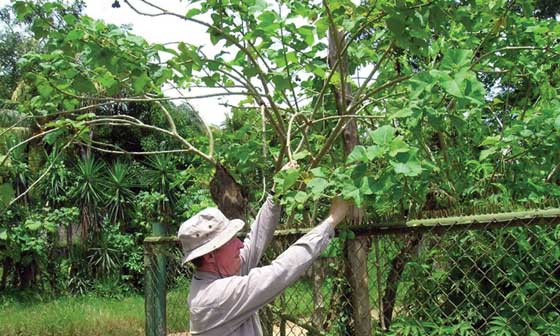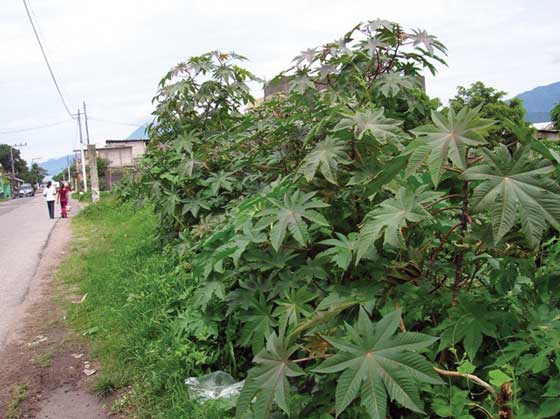Oliver Thornwhistle on—Could Weeds Turn Guatemala Green?
Could two common weeds hold the keys to Guatemala’s independence from petroleum imports? Chances are you’ve seen them, just not recognized them as you drive about Guatemala, especially since one flourishes in the coastal lowlands and the other is widespread in the highlands.
The piñon or the higuerilla, at about 38 percent and 19 percent by weight respectively, are two weed seeds which when refined into super-fine diesel may hold the keys to independence from the diesel smoke clogging Guatemala’s highways and your lungs. Then replace gasoline with ethanol, distilled from Guatemala’s prolific sugar production (fifth-largest producer in the world) and voila! A green Guatemala.
Piñon, native to Guatemala, grows in lowland soils and climates. It is fast becoming better known as jatropha, from its official name Jatropha curcas. Used mainly in arid regions as fencing, since cattle do not like the taste of its foliage, until recently it served principally as a free fence post for farmers. Now there are thousands of acres under cultivation, and the pioneering research into jatropha is being carried out in Guatemala, fittingly enough for a native plant. Millions of acres are under cultivation in Brazil, Indonesia and India. Users of the first commercial quantities of jatropha-based “diesel” produced here report that it burns cleaner than even the highest-grade diesel obtainable in international markets (Guatemala’s trucks and buses use an inferior grade) and is easier in wear and tear on diesel engines.
Jatropha, under ideal cultivation, management and processing, yields about 38 percent pure diesel by weight, and the simple distillation process can be worked out by a high school chemistry student.
It sounds too good to be true—“A desert weed that animals don’t eat—just throw it on fertile soil, stand back and get rich overnight.” That’s the pitch of a new breed of jatropha hucksters, peddling cheap Mexican desert acreage as an ideal investment. Sure enough, it can be planted in Mexican deserts, but the cold nights (remember, it is native to Guatemala’s warm coastal lowlands) preclude maturity to commercial yields. Researchers here are now homing in on basic facts about commercial jatropha production. Soils, rainfall patterns and basic spacing and pruning techniques are key elements in commercial production—too much rain befuddles jatropha, more used to arid climates.
Higuerilla, Ricinis officinus, prolific in Guatemala’s Highlands, is better known worldwide as the castor bean. Its yield by weight when converted to diesel is about half that of jatropha, but since its price is twice as high it is competitive. Dreaded castor oil is not the most important use for the castor bean. That role falls to it as the key ingredient in Castrol lubricants. Before you run out to pick a bunch to experiment with, beware since castor beans and leaves can produce nasty skin rashes.
Add ethanol, the sugar-based gasoline substitute already produced in massive quantities, to jatropha and castor diesel, and Guatemala becomes independent from fossil fuels.
Dreaming?

